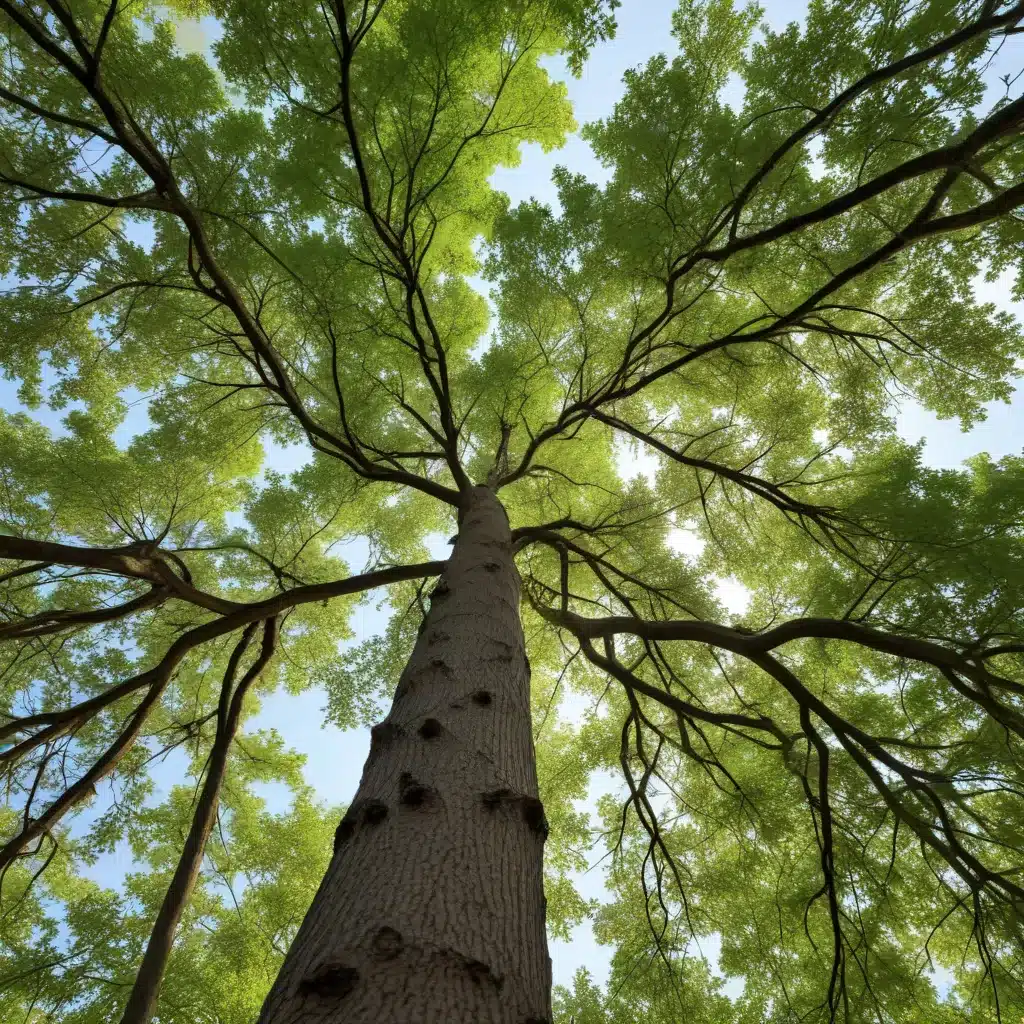
Navigating the Rhythms of Nature: A Guide to Tailored Tree Maintenance
Seasonal Cycles: Harnessing Nature’s Cues
The lifecycle of a tree is intricately synchronized with the rhythms of the natural world. From the resurgent energy of spring to the dormant stillness of winter, each season presents unique opportunities and challenges for tree care specialists like TriCounty Tree Care. By aligning maintenance practices with these cyclical processes, we can optimize the health, longevity and ecological benefits of the urban forest.
Spring Rejuvenation: As winter’s chill subsides, trees emerge from dormancy, redirecting resources to rapidly generate new growth. This is an opportune time to assess structural integrity, prune away dead or damaged branches, and fertilize to support vigorous development. Careful thinning can open the canopy, allowing sunlight to penetrate and stimulate the emergence of a lush, vibrant foliage display.
Summer Growth: The warm, sunny days of summer fuel photosynthesis, enabling trees to accumulate carbohydrates and expand their canopies. Proactive monitoring for pest infestations or disease is crucial, as trees are most vulnerable during this period of active growth. Supplemental watering may be necessary to sustain optimal moisture levels, particularly for newly planted or drought-stressed specimens.
Autumn Transition: As daylight hours wane and temperatures cool, trees shift their focus inward, preparing for winter dormancy. This is an ideal window for structural pruning to establish desirable branch architecture, without disrupting the tree’s natural defense mechanisms. The stunning autumn foliage display is a testament to this seasonal transition, as chlorophyll breaks down to reveal the underlying pigments.
Winter Dormancy: During the winter months, trees enter a state of dormancy, conserving energy resources. Maintenance during this period is largely focused on mitigating environmental stresses, such as protecting against frost damage or snow load. Careful monitoring and timely interventions can ensure the tree’s survival and resilience for the following growing season.
Tree Physiology: Understanding the Fundamentals
An in-depth knowledge of tree physiology is essential for developing tailored maintenance strategies. Each component of a tree’s structure plays a critical role in its overall health and function.
Root System: The root system anchors the tree, absorbing water and nutrients from the soil. Ensuring adequate soil moisture and aeration, as well as avoiding root damage during construction or excavation, are crucial for maintaining a thriving root network.
Trunk and Branches: The trunk and branch structure provide the framework for the tree, supporting the canopy and facilitating the transport of resources. Pruning techniques, such as thinning and reduction, can be employed to enhance structural integrity, light penetration and airflow within the canopy.
Foliage and Canopy: The tree’s leaves and branches form the photosynthetic powerhouse, converting sunlight, carbon dioxide and water into the carbohydrates that fuel growth. Maintaining a well-proportioned, balanced canopy is essential for optimizing the tree’s overall health and resilience.
Environmental Factors: Adapting to the Site
Trees do not exist in isolation; their growth and development are shaped by the surrounding environmental conditions. Understanding and accommodating these factors is paramount in devising effective maintenance strategies.
Climate and Weather: Regional climate patterns, including temperature, precipitation and wind, can profoundly influence a tree’s suitability for a particular location. Selecting appropriate species and cultivars, and implementing protective measures against extreme weather events, can enhance the tree’s long-term viability.
Soil Conditions: The physical, chemical and biological properties of the soil directly impact a tree’s nutrient uptake and overall vigor. Conducting soil tests, amending deficiencies and ensuring adequate drainage can optimize growing conditions and promote tree health.
Sunlight Exposure: The amount and quality of light a tree receives can dictate its growth habit, branching structure and susceptibility to pests or diseases. Positioning trees to capitalize on favorable light conditions, or providing supplemental shading where necessary, can help mitigate environmental stresses.
Tailored Maintenance Practices
Combining an understanding of seasonal cycles, tree physiology and environmental factors allows tree care specialists to develop a customized approach to maintenance. By aligning interventions with the tree’s natural rhythms, we can maximize the efficacy of our efforts and ensure the long-term well-being of the urban forest.
Pruning Techniques: Pruning is a fundamental aspect of tree care, but the timing and methods employed must be carefully considered. Thinning the canopy during the dormant season promotes structural integrity and enhances light penetration, while selective reduction cuts during the growing season can manage excessive growth or redirect energy allocation.
Nutrient Management: Providing the appropriate balance of essential nutrients is crucial for sustaining tree health. Soil amendments, such as organic matter or targeted fertilizers, can be strategically applied to address deficiencies and support vigorous growth. Consistent monitoring of soil moisture levels and timely watering can further optimize nutrient uptake and utilization.
Sustainable Tree Health
Ensuring the long-term vitality of the urban forest requires a comprehensive approach that integrates pest and disease management with sustainable integration within the built environment.
Pest and Disease Control: Vigilant monitoring for insect infestations or pathogenic infections, coupled with proactive, ecologically-sensitive control measures, can prevent the spread of harmful organisms and safeguard the overall health of the tree population. Emphasis on cultural practices, biological controls and the selective use of pesticides can minimize environmental impacts.
Urban Tree Integration: Preserving and integrating mature trees within the built landscape poses unique challenges, but the benefits are undeniable. Careful planning during construction, adherence to best planting practices, and ongoing community engagement can foster a harmonious coexistence between people and the urban forest.
By harnessing the rhythms of nature and tailoring maintenance practices accordingly, tree care specialists can cultivate a thriving, resilient urban forest that delivers immense ecological, economic and social benefits to the communities they serve. At TriCounty Tree Care, we are committed to this holistic approach, ensuring the long-term vitality of the trees that enrich our shared environment.


